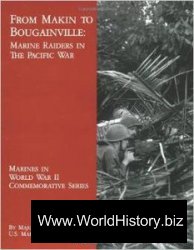The Atomic Energy Commission (AEC) was a civilian agency created to explore, promote, and regulate the uses of nuclear energy.
Established by the Atomic Energy Act of 1946, the AEC inherited the central task of the Manhattan Project, which created the first ATOMIC BOMB, developing fissionable weapons for military purposes, but also sought to create peacetime applications of atomic power. President Harry S. Truman appointed the commission’s five civilian members, only one of whom was a scientist (Robert F. Bacher). The first chairman was David E. Lilienthal, former head of the Tennessee Valley Authority. Protected under tight security and privileged with a virtual monopoly on nuclear matters, the AEC and its constituent labs invested resources heavily on classified research and weapons production.
The mounting COLD WAR tensions of the late 1940s and the early 1950s resulted in a massive rearmament campaign, one that included the HYDROGEN BOMB project, that began with the decision to move ahead with this new weapon in 1950. The AEC tested all weapons, beginning with tests in the Bikini atoll in the Pacific Ocean in 1946, and continu-

The USS Nautilus (SS-571), the navy's first atomic-powered submarine, on its initial sea trials (Library of Congress)
Ing with other tests in subsequent years both in the Pacific and at the Nevada Test Site, near Las Vegas, that opened in 1950. Between 1951 and 1963, the United States conducted approximately 106 tests at this site. As tests around the world showered fallout—residual radioactive debris produced by the weapons being tested—over people everywhere, concern mounted about the health dangers. The AEC, responsible for both development and control, went out of its way to minimize the danger fallout posed.
At the same time, the AEC hoped to ease public fears by promoting the atom in peace-minded terms. Lilienthal, whom the press dubbed “Mr. Atom,” routinely wrote and spoke about the benevolent promises of atomic energy. Research institutions under contract with the commission, such as Brookhaven National Laboratory in Long Island, New York, actively publicized the nonmilitary benefits of nuclear science. President DwiGHT D. Eisenhower further voiced the optimistic uses of the atom. In his “Atoms for Peace” speech delivered at the United Nations on December 8, 1953, the Republican president called for the international control of atomic energy and underscored its possibilities in fostering global peace.
The Atomic Energy Act of 1954 assured a continuation and expansion of the AEC’s activities. The new act called for further development of atomic weapons, renewed discourse about the “peaceful atom,” and encouraged the implementation of nuclear reactors through the assistance of private companies. AEC members believed that commercial power plants would not only provide for an alternative energy source but also would exemplify the peacetime potential of atomic power and help restore the nations preponderant status in nuclear technology (once broken by the Soviets’ successful testing of their A-bomb in 1949).
The first breakthrough came when Admiral Hyman
G. Rickover directed the development of the first nuclear-powered submarine, launched in 1954. The submarine provided a model for a reactor on land. In 1957, Rickover presided over the development of a reactor that went online in Shippingport, Pennsylvania. Nuclear power, while expensive, was a reality.
The AEC did all it could to promote atomic power. It offered previously classified information, technical assistance, financial support, and a number of other inducements to private businesses. Even though the operation and maintenance costs of the early reactors were considerably higher than those of fossil fuel plants, by August 1955, five companies announced their interest in running nuclear power plants. The breakthrough construction of the Oyster Creek power plant of the Jersey Central Power and Light Company in 1963—a facility that was almost fully financed by General Electric (GE)—ushered in a booming phase in the reactor industry. Competition intensified among private entities, particularly between GE and Westinghouse. Applications for power plants increased in number, the size of plants grew, and the electrical capacity of fissionable sources multiplied. In 1966 and 1967, utilities ordered about 50 plants. Between 1970 and 1974, they ordered more than a hundred additional facilities.
Meanwhile, reactor development raised serious medical and environmental concerns. The bombs dropped on Hiroshima and Nagasaki, as well as nuclear testing of the early post-World War II years, sparked the fear of nuclear fallout and prompted scientists of the National Committee on Radiation Protection (and other groups) to assess the dangers of radiological contamination. The fallout debate quickly spread to the general public; in an effort to prevent disastrous consequences, the AEC decided to tighten its radiation standards for power plants and elaborate on safety procedures. The Price-Anderson Act of 1957 further granted compensations for damages caused by power plant accidents. Despite these new agendas and policies, professional and public apprehensions continued to surface over such issues as thermal pollution, waste disposal, and core meltdown.
The growing concern about the environment and safety issues revealed the difficulties in appropriating atomic power for peacetime uses. Eventually, the AEC found itself more than fully occupied with the task of both development and regulation of nuclear energy. In 1974, Congress passed the Energy Reorganization Act, which divided the AEC into the Energy Research and Development Administration and the Nuclear Regulatory Commission. The act went into effect in January 1975.
Further reading: George T. Mazuzan and J. Samuel Walker, Controlling the Atom: The Beginning of Nuclear Regulation 1946-1972 (Berkeley: University of California Press, 1985); J. Samuel Walker, Containing the Atom: Nuclear Regulation in a Changing Environment, 1963-1971 (Berkeley: University of California Press, 1992).
—Hiroshi Kitamura




 World History
World History









